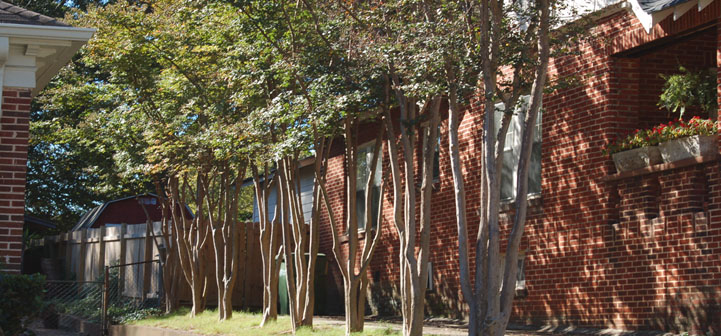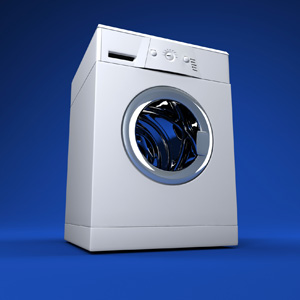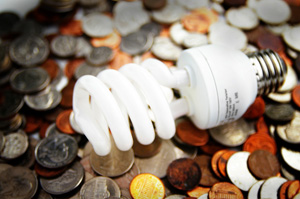Reviewed and Revised 01/03/2014
Simple tips designed to help you save energy in your home with little or no out-of-pocket costs.
Heating
-
Set thermostats no higher than 68 ºF when people are home.
-
Lower the thermostat when you sleep or not at home. Lowering the thermostat by 10 to 15 degrees for 8 hrs can help you save 5-15% annually on your heating bill. Energy.gov website states that if the setback period is 8 hrs or longer than savings of as much as 1% for every degree setback can be achieved.
-
To ensure the heat gets to where it is supposed to go, use mastic or foil-faced tape to seal the seams and any cracks in air handling ducts.
-
Have the heating system serviced each year to ensure efficient operation.
-
Clean or replace furnace filters. Dirty filters reduce the efficiency of the furnace or heating system and waste valuable fuel. Clean or replace the filter(s) as directed by the manufacturer.
-
Do not place furniture and curtains over or around the heat registers or in front of cold air returns. These items will block the airflow.
-
Put on a sweater or warmer clothing for comfort, and lower the thermostat even more. Layer clothing. Closed or tighter cuffs and collars help to retain body heat.
-
Never use the stove for additional heat. It is dangerous. Besides causing a fire hazard, fumes given off by combustion from gas appliances can result in increased carbon monoxide levels.
-
On sunny days, open blinds, shades, and curtains, especially if your windows face south. At night, close the blinds, shades, and curtains to help keep heat in your home.
Cooling
-
During the day, keep window shades or blinds down and closed, especially on east and west facing windows. In the evening and early morning, open windows if the temperature and humidity are lower.
-
The recommended thermostat setting for air conditioning is 78 ºF when people are at home. This setting should be turned up to higher temperatures when no one is home to help reduce the energy use.
-
If you have a window air conditioner, place it in a window that is shaded or on the north side. This will help it perform more efficiently. Weatherstrip around the air conditioner.
-
When the cooling system is operating, close and lock all windows and doors. Close exterior sliding storm windows. Locking doors and windows creates at tighter seal and reduces air leaks. During less humid warm days, open the windows in the mornings and evening to allow fresh air to help cool the home.
-
Correctly positioned shade trees and awnings reduce the heat gain in the home during the warm and hot days.
-
Use towels or a draft stopper to block air coming in under doors that lead to the outdoors, or buy a door sweep. If the door leaks around the entire frame, install foam weatherstripping between the door and the frame.
-
Use blinds, shades, and lined curtains or draperies to block heat gain during the summer. If your curtains or draperies aren’t lined, use a sheet, or purchase tightly woven heavier fabric. Create a casing on the top end and attach to a rod behind the window treatment.
-
Use overhead fans or fans to cool the body in locations most often used. The air conditioning system can be set at a higher temperature when fans are cooling the body.
Windows and Doors
-
Close and lock all windows and doors when heating and cooling systems are in use. Close exterior sliding storm windows. Locking doors and windows creates a tighter seal and reduces air leaks.
-
Stop air leaks under doors. Use a draft stopper or towels to block air coming in under doors from the outdoors and heat escape. For a more permanent solution, buy a quality door sweep to attach to the bottom of the door. Repair or replace threshold gaskets. If the door leaks around the entire door opening, install weather stripping between the door and the frame.
-
Weatherstrip the moving parts of the doors and windows. Choose a more durable product to avoid early replacement. Products are made for the channels or window glides, for the window bottom, and for use where double hung windows meet.
-
Use a paintable caulk to caulk around the window frame where the interior window frame meets the wall. Use an appropriate caulk for the materials on the exterior where the window frame meets the house siding (exterior wall). This prevents air currents into the wall itself.
-
Use blinds, shades, and lined curtains or draperies to reduce heat loss in the winter. If your curtains or draperies aren’t lined, use a sheet, or purchase a tightly woven heavier fabric. Create a casing on the top end, and attach to a second rod behind the window treatment.
-
When the sun is shining in the winter, open window treatments to allow the radiant energy to come into the home through the windows where the sun streams in.
Water
-
Set your water heater at a temperature of 120ºF (medium setting on a gas heater dial). This will help you to cut your water heating costs by 6-10%.
-
Turn the water heater further down if you are away for an extended period of time.
-
Insulate the hot and cold water pipes at the water heater for at least 6-10 feet. Insulate all exposed water pipes for even more efficiency to prevent heat loss and heat gain.
-
Front loading washers are usually more energy efficient than top loaders. Look for the ENERGY STAR® and/or Water Sense logos when purchasing new.
-
Install low-flow faucets and shower heads and take shorter showers.
-
Fix faucet leaks. A single faucet from just one home dripping at a rate of 1 drip/minute would waste 34 gallons of water annually.
Range (Stove) and Oven
-
Use the broiler or microwave when possible. Surprisingly, the broiler uses less energy, and does not need to be preheated. The microwave can be up to 80% more efficient.
-
Use the kitchen exhaust fan when cooking to reduce moisture problems and pollutants.
-
Don’t use the oven to help heat your home. Besides causing a fire hazard, the fumes given off by the flames over an extended period can result in increasing carbon monoxide levels.
-
Use lids on pans and pans that fit burners to reduce heat loss.
Refrigerator
-
Refrigerators cost about $5 to $8 or more per month to operate consuming 3-5% of your total energy use. Keep the refrigerator at or below 40ºF and the freezer at 0ºF.
-
Check the gasket (soft plastic piece that seals the door to the body of the refrigerator) for gaps and improper fit. The door should close firmly against the gasket. Check the tightness of the door by placing a dollar bill between the gasket and the door. You should feel a slight drag when you pull it out.
-
Do not locate an oven or heating appliance close to a refrigerator, as the refrigerator will have to work harder to keep items cool. Do not put refrigerators in unconditioned rooms such as garages or porches.
-
Try not to keep the door open longer than necessary. If accessible, vacuum coils and keep drain trays clean.
Dishwasher
-
Run the dishwasher only when it’s full.
-
Many dishwashers have energy-saving settings, such as a setting for partial loads (which uses less hot water) or energy efficient drying cycles which should be taken advantage of.
-
More tips are available here.
Washer and Dryer
-
Use hot water only for very dirty clothes and diapers, if there is an illness in the family, or if someone has a suppressed immune system. Refer to the washing instructions on the clothing labels and on the washing machine. Preferably wash in cold water using cold water detergents whenever possible.
-
Full loads of laundry in the washer save both energy and water. Adjust water levels for smaller loads.
-
Clean the lint from the dryer’s filter after every load.
-
Operate the dryer like the washer: Don’t overload it. Overloading uses excess energy, because the items take longer to dry. Hang items to dry outside if possible.
Lighting
-
Incandescent bulbs use 70-75% more energy than compact fluorescent lamps/lightbulbs (CFLs) and 80% more than LEDs. Change all incandescent bulbs in your home either to CFLs or LEDs.
-
Turn off lights when a room is not occupied.
-
Use natural light as much as possible.
-
Use one higher wattage bulb (lamp) instead of several lower watt bulbs when possible. A 100-watt bulb gives off about 20% more light than two 60-watt bulbs. Do not use a higher than recommended wattage bulb in a light fixture.
-
Dust lightbulbs. Dusty bulbs can emit 20% less light.
- Install outlet and switch foam gaskets to stop air leakage. Follow safety instructions and turn off the power at the breaker box before installation. Use all suggested safety precautions.
Small Appliances and Electronics
-
Disconnect unnecessary or unused equipment to prevent phantom energy losses.
-
Completely power down or shut off electronics (e.g. computers, TVs, printers, etc.) when not in use. Use a power strip to completely shut off the power supply to electronic equipment.
-
Unplug chargers when phones, computers, and other items are fully charged, as chargers will continue to use electricity when plugged in.
Shirley Niemeyer, Extension Specialist, Housing & Environment, University of Nebraska – Lincoln


